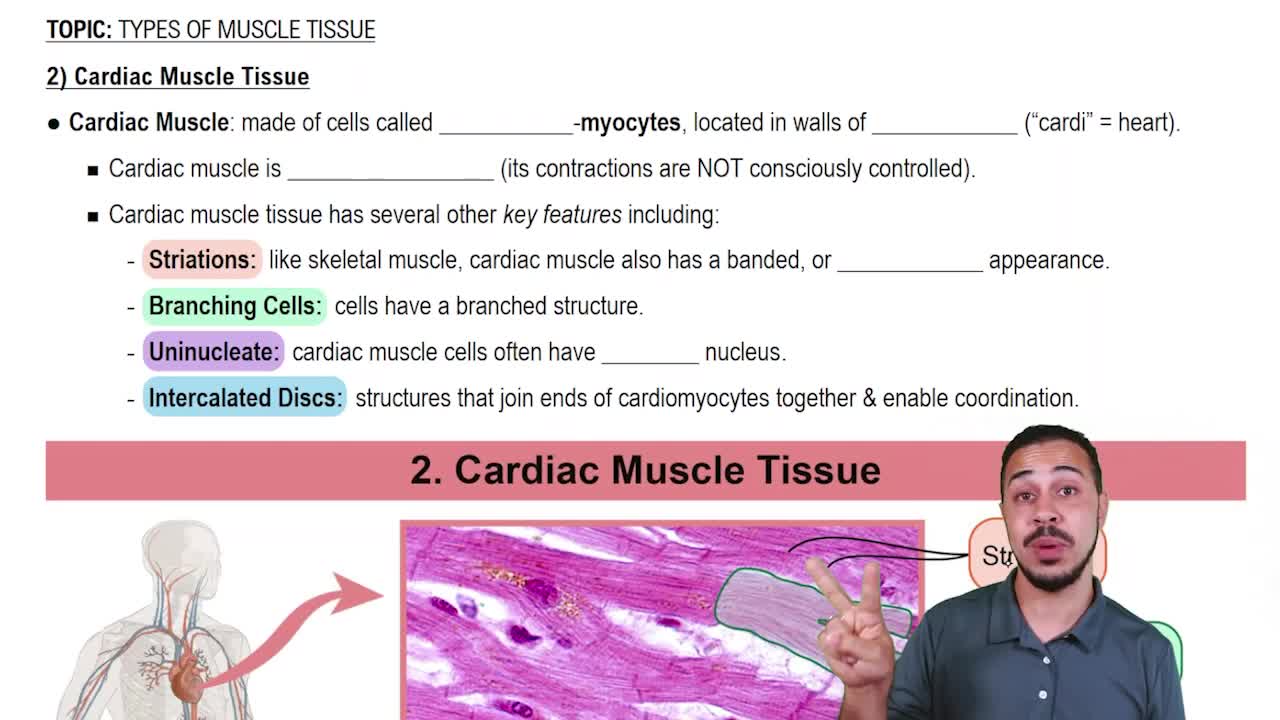A newer drug, Ivabradine, lowers the heart rate by blocking the nonselective HCN cation channels. Why would this action decrease the heart rate? Would this drug have an effect on pacemaker cells, contractile cells, or both? Explain.
An experimental toxin makes the refractory period of cardiac muscle cells equal in length to that of skeletal muscle fibers. Predict the consequences of this toxin. (Connects to Chapter 10)
 Verified step by step guidance
Verified step by step guidance
Verified video answer for a similar problem:
Key Concepts
Refractory Period

Cardiac Muscle Physiology

Skeletal Muscle Physiology

Which of the following statements is true?
a. The tricuspid valve is located between the right atrium and the right ventricle.
b. The mitral valve is located between the pulmonary veins and the left atrium.
c. The pulmonary valve is located between the pulmonary artery and the pulmonary veins.
d. The aortic valve is located between the right ventricle and the aorta.
Mr. Watson has been diagnosed with mitral insufficiency, or a malfunctioning mitral valve, which causes the valve to not close properly. Predict the signs and symptoms you might expect from a disease of this valve. What would happen to the patient's stroke volume and cardiac output? Explain. What might help improve his cardiac output?
How do pacemaker cardiac muscle cells differ from contractile cardiac muscle cells? What is autorhythmicity?
Cardiac muscle cells are joined by structures called:
a. T-tubules.
b. tight junctions.
c. sarcoplasmic reticulum.
d. intercalated discs.
Mark the following statements as true or false. If a statement is false, correct it to make a true statement.
a. The rapid depolarization phase of the contractile cell action potential is due to the opening of voltage-gated potassium ion channels.
